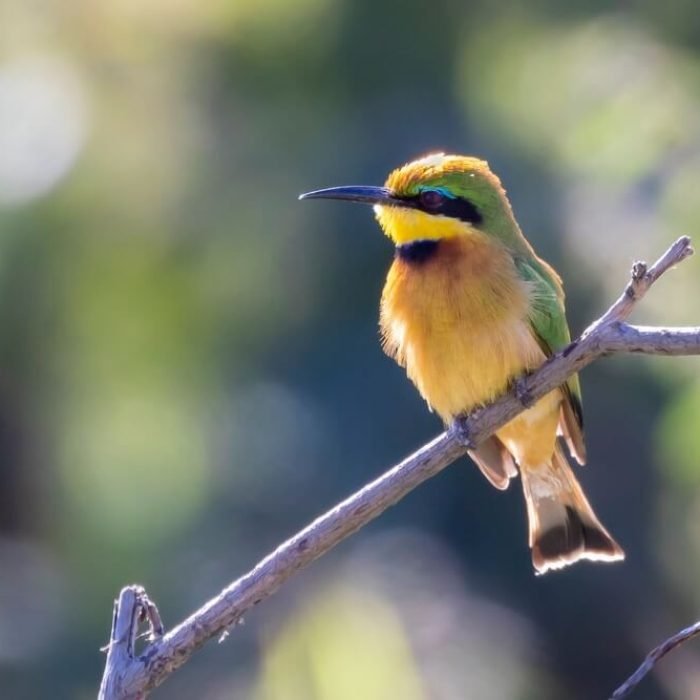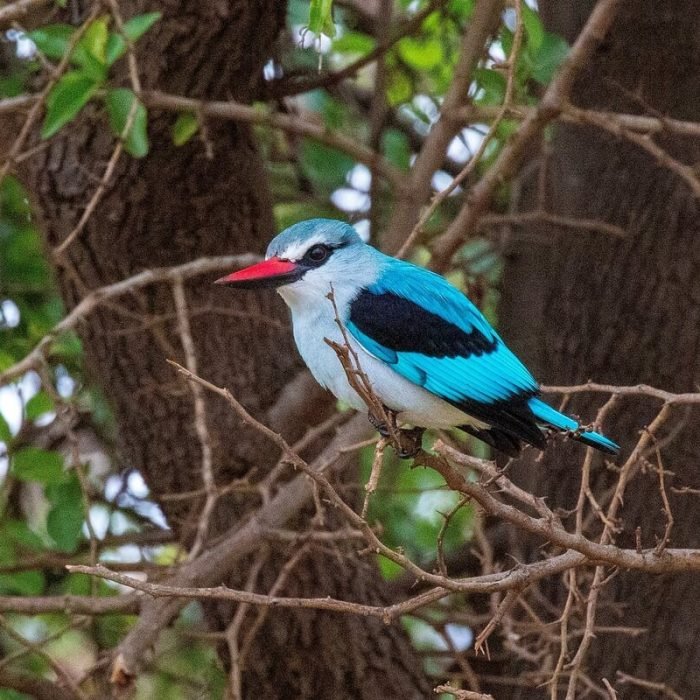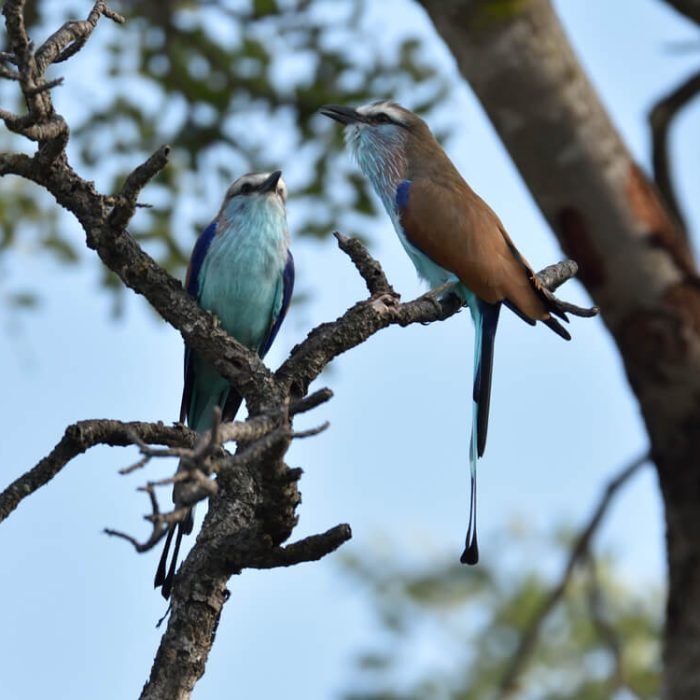Blue Waxbill
( Blue Sisi, blue see-see, blue-cheeked cordon-bleu, blue-breasted cordon-bleu, southern blue waxbill, blue-breasted waxbill, southern cordon-bleu )
- Uraeginthus angolensis
- IUCN Status: Least Concern
- Trend: stable

General Information
The blue waxbill is a common species of estrildid finch found in Southern Africa of which three subspecies exist in Zambia. It is also relatively commonly kept as an aviary bird.
Description
The blue waxbill has powder-blue face, breast, rump, and flanks with pale brown upperparts. The female is paler than the male and the blue is confined to the rump, tail, head, and upper breast, with the rest of the underparts being buffy brown.
Fun Facts
The Blue waxbill is locally known as a “Blue sisi” due to the soft ‘seee-seee’ sound they make.
They often choose to build the nest near the nest of a wasp such as Belonogaster juncea; there is no evidence that wasps deter nest predators, but the birds may use the presence of wasp nests as a way of working out whether there are arboreal ants Pseudomyrmex spp in the tree, as if present they would deter nesting by any wasps or birds.
Ecology and Behaviour
The call is a soft ‘seee-seee’, often repeated as bird flits through the lower parts of bush and scrub.
Diet
The blue waxbill mainly eats grass seeds, which are taken from the inflorescences flower plants. This is supplemented with termites and other insects. They have also been recorded eating the fallen fruits of the shepard tree (Boscia albitrunca). They are normally seen in pairs or family parties, but do form larger flocks which often mix in with flocks of other estrildid finches.
Reproduction
Both sexes build the nest, an oval-shaped structure with a short entrance tunnel on the side, constructed of grass stems and flower plants (inflorescences) and lined with feathers. The nest is normally placed among the foliage of a bush or tree, especially umbrella thorn and sickle bush (Dichrostachys cinerea). They often choose to build the nest near the nest of a wasp such as the paper wasp (Belonogaster juncea) there is no evidence that wasps deter nest predators, but the birds may use the presence of wasp nests as a way of working out whether there are arboreal ants Pseudomyrmex spp in the tree, as if present they would deter nesting by any wasps or birds. Blue waxbills may also re-use the old nests of other birds, such as scarlet-chested sunbird, spectacled weaver or black-chested prinia, sometimes building a new structure on top of the original.
They breed all year round but egg laying usually peaks in January, two months on from the onset of the rains in southern Africa. The clutch size is between 2–7, incubation is carried out by both sexes and takes 11–12 days. Both parents feed the chicks on green grass seeds and termites, until they fledge after 17–21 days. They are capable of fending for themselves a week after fledging, becoming fully independent a week later.
Conservation
It is listed by the International Union for Conservation of Nature(IUCN) as a, “Least Concern”.
Distribution and Habitat
The blue waxbill occurs in southern Africa from Zambia, Cabinda and the Congo to Kenya and Tanzania in the east south to northern South Africa. It may have been introduced to the islands of São Tomé and to Zanzibar.
The blue waxbill occurs in a variety of habitats but generally prefers well-watered and semi-arid savanna, particularly where umbrella thorns Acacia tortilis trees grow, also occupying natural growth in cultivated land, mopane tree’s and forest edges.
Interaction with Humans
They have been known to be hunted by kids who use small catapult weapons called “malegeni”(translated to rubber) or bird traps.













